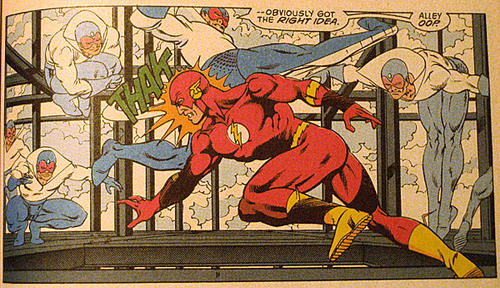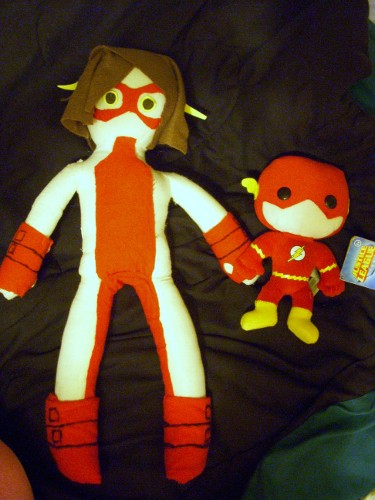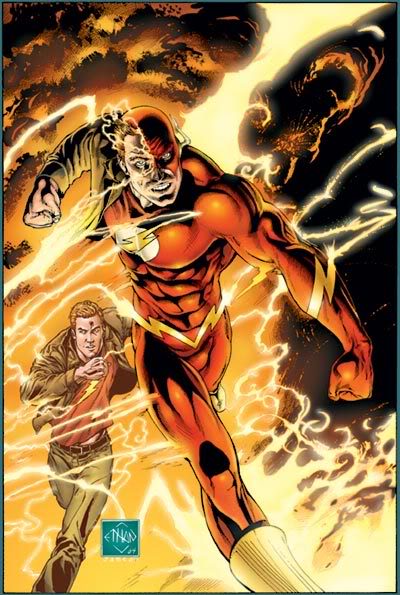Today’s guest post is the first in a series of interviews by Greg Elias on The Art of Speed.
In 1988, Wally West was powerless, penniless and nearly homeless. With Flash #15, the creative team of writer William Messner-Loebs and artist Greg LaRocque began their memorable take on the title. Throughout their run, Loebs and LaRocque established the touchstones of Wally’s life in Keystone City, including many of the character’s major themes and a supporting cast that remains vital. LaRocque was also on board when writer Mark Waid took over, starting with issue #62 in 1992. Wally West continued to bloom under Waid, reaching new levels of confidence and self-assuredness each month. Wally’s road back from that low point played out over five years and 64 issues.
Each and every benchmark during that time, including the landmark issue #50 and introduction of a new Flash costume, was seen through the eyes and pencils of LaRocque. Previously associated with a highly- regarded body of work on Legion of Super Heroes, his style would end up defining the Flash for longer than any artist since Carmine Infantino or Irv Novick.
Perhaps no storyline is more closely identified with the development of the Wally West character than 1993’s The Return of Barry Allen. Within, Wally is faced with the shocking apparent return of his deceased uncle and mentor, Barry Allen, the second Flash. This was LaRocque’s last stand on the title – his final run with the character he had drawn from the depths of poverty and doubt. We asked LaRocque about his work on the story, focusing on the construction and the subtleties of putting together a super-speed coming-of-age.

Q: One of the things that defines The Return of Barry Allen is the super-speed action sequences. You’ve got Johnny Quick and Max Mercury in the mix, along with Wally West, Jay Garrick and “Barry Allen”. Given the larger cast, and each character having the same power (and somewhat similar costumes), what were some of the challenges in constructing these memorable scenes? Was there an attempt to define each character’s own “style”?
GREG LAROCQUE: That is best demonstrated in the construction scene when Max Mercury teaches Zoom a lesson in technique. Mark wrote it out for me in the script & it was a challenge to visually portray the different ways the cast displayed their skills. With Max, he was all about grace & fluidity, like water, like mercury. Zoom ran & moved effortlessly because he was the fastest & gloating. Jay & Johnny were the traditional full speed ahead runners.
Quick note on Wally. I never drew him running. He GLIDES like an ice skater.
Continue reading →



